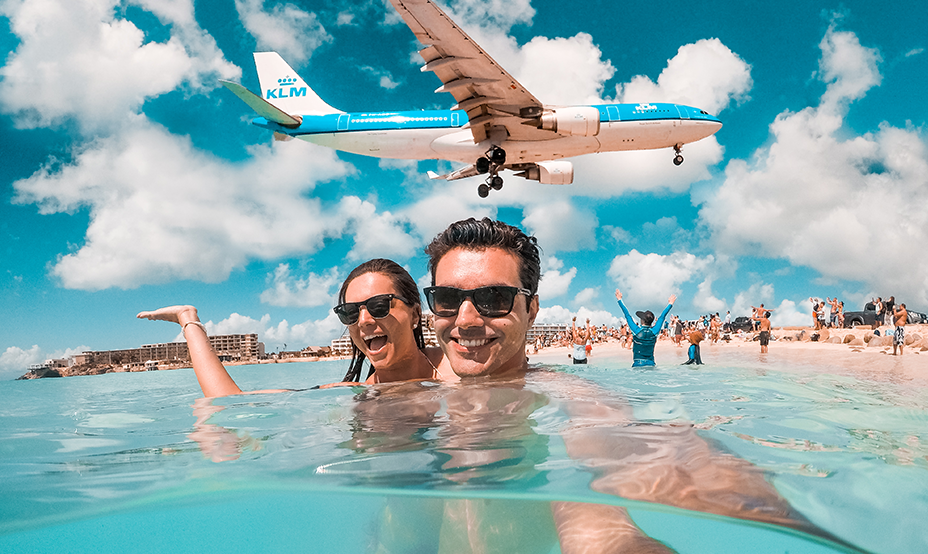The Art of Plane Spotting
Here’s an adrenaline rush like no other.
Chris Garner is an avid plane spotter, part of an active plane spotting community who try to capture the “rush” of jets flying right over their heads as they land or take off at Princess Juliana International Airport.
Plane spotters set out to capture the iconic landing experience. Seeing a plane approach over the azure waters of Maho Bay and start to descend is pure adrenaline, Garner says. Then there’s the thrilling “jet blast,” powerful gusts generated by departing planes.
Garner, a paralegal, was drawn to the camera a few years ago and soon found her niche in plane spotting. “I used to be a very nervous flier,” she says, “but since taking up a camera, it has been better. Looking through the lens takes the stress away.”
“There’s something about the sight and sound of a 747 coming in,” says airport official and fellow plane spotter Franklyn “Beeks” Wilson. “Taking a photo of it is even more of a rush. Plane spotting is a real way of capturing something that’s moving very fast.”
Ellinger Paul, a marina security official who has been snapping photos for more than a decade, also can’t get enough of plane spotting. “St. Maarten is perfect for this,” Paul says. “You can take photos from the beach or while standing in the water. Some spotters have even booked rooms in Sonesta Maho to get the best shots.” All three agree that it’s important to use the right setting and ensure that the camera is in “burst shot” mode. That’s because you have only about five seconds to get the shot of an arriving plane. As Paul says: “There’s an art to plane spotting. It takes a lot of practice.”
That art is not only in the cleverness of the photographer. Spotters say they like to photograph a plane that’s never been to the island or one clad in special livery to celebrate or mark an event. For Garner, the “special one” was a colorful Azerbaijan Airlines Airbus 340-500; Paul’s was a Boston Red Sox–themed JetBlue A320-200; and Wilson will long remember that Plus Ultra Charter A340-300.
The airport is supportive of plane spotters. Various camera positions are located around the facility. Garner and fellow spotters recommend that you use camera points close to the airport’s cargo section. Garner also suggests taking photos of planes coming in to land from “dead center” of Maho Beach. “This spot is not for takeoffs but great for landings. You can get the plane, the water and the beach. And if you are super lucky, a fabulous yacht may also be in your frame!”
You can also practice the art of plane spotting on neighboring islands like St. Barths and Saba. Pilots must be specially trained to land at St. Barths’ tiny Gustav III Airport and Juancho E. Yrausquin Airport in Saba.
The airport on St. Barths has a short airstrip at the base of a sloping hill that ends directly on the beach. The arrival descent is extremely steep, taking fliers over the hilltop roundabout (yes, with traffic buzzing by). The takeoff is right over sunbathers’ heads.
Saba is a volcano jutting out of the Caribbean Sea known for having the shortest commercial runway in the world — only 400 meters (1,312 feet) long. The runaway is bound on one side by high hills and cliffs that drop into the sea at both ends. Pilots have to glide down to land. And to take off? Think of how a jet is propelled off an aircraft carrier, then add falling off a cliff and steadily climbing up, up, up into the sky!
And, remember, you don’t have to be a professional photographer to get that special plane spotting thrill. All tourists have to do is look up.

